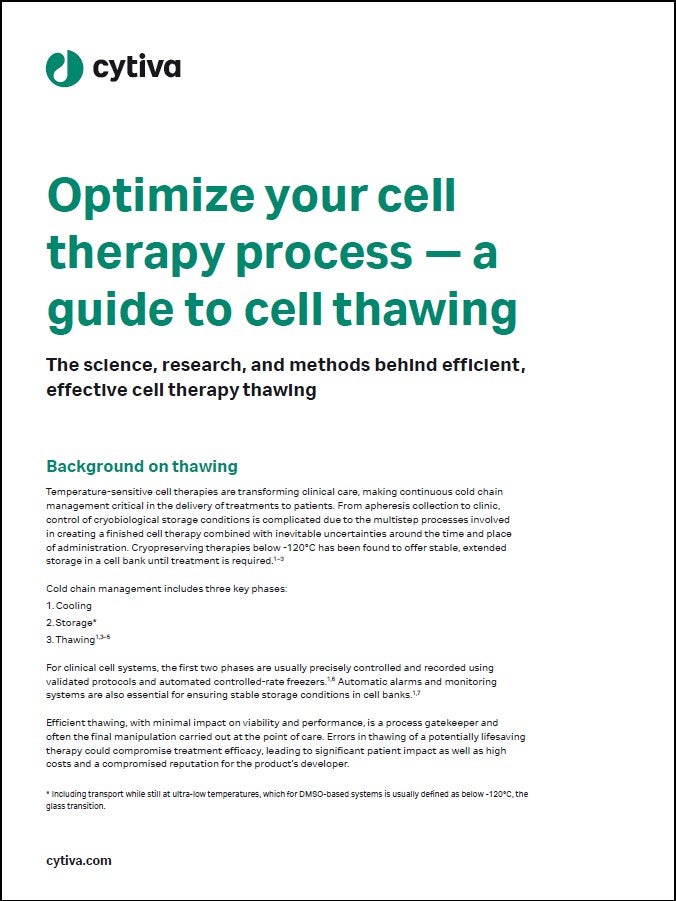

The development of drugs and gene therapies for rare diseases is costly. It requires significant investments in advanced technology, clinical trials, and regulatory approvals. But what happens when the development of such gene therapies is paused once they are no longer commercially viable?
A few weeks ago, Swiss biopharma Basilea announced it will sell and transfer all rights for the company’s glioblastoma candidate lisavanbulin (BAL101553) to the Glioblastoma Foundation for an undisclosed initial purchase cost. The charitable organisation plans to take over lisavanbuilin’s post-access trial programme, allowing patients from previous clinical studies to continue receiving the drug.
Similarly, in April 2024, Great Ormond Street Hospital (GOSH) in the UK announced that it is attempting to obtain the licence for gene therapy simoladagene autotemcel to treat the rare disease adenosine deaminase-deficient severe combined immunodeficiency (ADA-SCiD) on a non-profit basis. This came after the University College London-spinout Orchard Therapeutics, which planned to bring it to market, dropped out of its development plans. If successful, this will be the first time that an NHS trust has the authorisation to market a drug for this kind of treatment.
ADA-SCiD is a rare genetic disorder marked by a severely deficient immune system due to mutations in the ADA gene, which is crucial for producing the enzyme adenosine deaminase. It causes a severely compromised immune system, leading to recurrent, severe infections, and developmental delays.
Across three clinical trials conducted in the US and UK, 50 patients with ADA-SCiD were treated with simoladagene autotemcel, which was co-developed by labs at UCL and University of California Los Angeles. The overall survival with the gene therapy was 100% in all studies up to 36 months. Event-free survival, defined as no need for enzyme-replacement therapy or rescue allogeneic haematopoietic stem-cell transplantation, reached 97% and 95% at 24 months, respectively, in the two US studies (NCT01852071 and NCT02999984) and 95% in the UK study (NCT01380990).
The gene therapy is currently available to patients in clinical trials, but it is important for these therapies to be approved. Dr. Claire Booth, who leads the ADA-SCiD clinical trial at GOSH, says “We want to ensure that these proven treatments can be offered to patients and families quickly and simply, without the need to look at compassionate use approaches.”
Why are gene therapy programmes for rare diseases dropped?
One of the main challenges associated with developing gene therapies is funding. It is difficult to get funding from venture capital or private investors due to small patient populations and uncertain returns. Grants can fund early clinical trials, but not the full development and approval process, which requires more funding, explains Dr. Donald Kohn, lead investigator of the ADA-SCiD programme at UCLA, and Distinguished Professor, Microbiology, Immunology and Molecular Genetics.
Another huge challenge is the expensive commercial-grade manufacturing costs. “Commercial feasibility plays a big role in pharma companies progressing drug development and this may be challenging in ultra-rare diseases with small patient populations. Advanced therapies like gene therapy are costly and complex to produce.”
Simoladagene autotemcel is composed of autologous CD34+ haematopoietic stem and progenitor cells (HSPCs) transduced ex vivo with a self-inactivating lentiviral vector encoding human ADA. Lentiviral vector production represents a large portion of the high costs associated with such therapies.
“The cost of reagents needed to make a gene therapy product is high, but we hope that this may come down in the future,” says Booth.
One company that is trying to tackle high manufacturing costs is Ori Biotech. The biotech, which is headquartered in London, UK and Woodcliff, New Jersey, has developed an automated platform that streamlines the cell therapy manufacturing process.
“[Ori’s] IRO platform takes the most labour-intensive and time-consuming parts: activation, transduction, expansion, and harvest, and automates them into one integrated system without any manual interventions or tubing,” said Ori Biotech’s CEO Jason Foster.
In doing so, the platform aims to increase throughput, lower cost, and improve reliability by reducing failure rates. Ori has worked with companies like North Carolina-based Inceptor Bio to scale up manufacturing of their chimeric antigen receptor (CAR)-M, CAR-T and CAR-NK programmes. One of its candidates IB-T101 is set to enter clinical trials in Q4 2024.
In addition to funding challenges and manufacturing costs, there might also be differences based on locations in how gene therapies are made accessible to patients, says Kohn. He explained that national healthcare systems, like those in Europe, may have some advantage in funding rare disease gene therapies compared to the US healthcare system that includes multiple private payers. With a single national payer, developers only need to negotiate reimbursement with one entity rather than many private insurers. Additionally, Kohn said national systems can recognise that an initially high-cost therapy might save money over many years if it treats a fatal or chronic rare disease.
Can gene therapies be developed not-for-profit?
Just as a nonprofit hospital like GOSH is attempting to license EFS-ADA, there are other cases of individuals taking matters into their own hands, via an untraditional route. Terry Pirovolakis started Elpida Therapeutics, a not-for-profit biotech, after his son Michael was diagnosed with a rare disease called spastic paraplegia type 50 (SPG50) at five months old.
After Michael received his diagnosis, Pirovolakis said: “We were told, “Go home, love him. There’s not much we can do. He’ll be paralysed from the waist down by the age of 10, quadriplegic by the age of 20”. I just couldn’t accept that fate for my child.”
Elpida, which is set up as a company but operates as a nonprofit, was initially funded with money from philanthropists. Pirovolakis explained that the model works through partnerships with companies, institutions, and hospitals. When the organisation partners with a hospital, the latter agrees to treat a certain number of patients for free, or at a very low cost. In exchange, Elpida gives the hospital a promissory note.
He explains that funds through incentives from the US Food and Drug Administration (FDA) like priority review vouchers (PRV) for a gene therapy product will be used to pay the hospitals, and to hopefully fund more programmes.
“They’re [the hospital] taking on a mutual risk with us knowing that we’re trying to do good, not just trying to make money,” said Pirovolakis.
Elpida aims to use any money it makes after paying the promissory notes to fund more programmes. Earlier this month, Pirovolakis mentioned that the FDA greenlit Elpida’s plans to initiate a Phase III study of its lead candidate Melpida for patients with the rare disorder SPG50. Eight children will be dosed in the trial that is set to begin in August 2024. This is off the back of an ongoing Phase I/II (NCT05518188) trial.
Pirovolakis says there can be a socially acceptable way of dealing with the therapies once they’re deemed commercially unviable. Pharma companies want to help find therapies for rare diseases but also need to consider their best interests. “So, when they drop it [a therapy], [giving it] to another company, or back to the university….that’s an ethical way of doing things.
When they hold it for five or 10 years, looking for a financial partner to recoup their lost assets, that is not the right way of doing things.”
Despite the promise of these alternate models, Pirovolakis delivers a stark reminder: “Our model isn’t ideal; it is out of necessity.”
Cell & Gene Therapy coverage on Pharmaceutical Technology is supported by Cytiva.
Editorial content is independently produced and follows the highest standards of journalistic integrity. Topic sponsors are not involved in the creation of editorial content.




